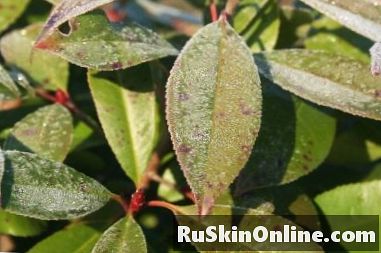
Content
- Why the glossy medlars are only partially hardy
- The frost tolerance of the evergreen shrubs
- Water cycle in winter
- Protection from the cold

The medlar is hardy, but does not get along well without water
Why the glossy medlars are only partially hardy
White medlars are commercially available as hardy. But the cold season can endanger the evergreen shrubs. In order not to disturb the biological processes, the correct winter protection is necessary.
The frost tolerance of the evergreen shrubs
As evergreen plants, the glossy medlars keep their leaves throughout the winter. In spring, an exchange of old leaves. The bushes are new. The glossy medlars originally came from the warmer regions of Asia. Its distribution area extends from the Himalayas through China to Thailand and India. Here many Photinia species grow in regions with temperatures below freezing. Although the commercially available varieties are often considered hardy, particularly long periods of cold weather can damage the plants.
Water cycle in winter
The plants are endangered by ground frost reaching deep into the earth. As long as a thick layer of snow is lying on the ground, there is no danger to most varieties at temperatures down to -20 degrees Celsius. The snow acts as an insulation layer and prevents the ground from freezing. The glossy medlar roots can absorb water on the ground, which their evergreen leaves need in winter.
Unlike deciduous shrubs, the water cycle in evergreen plants is not set in winter. Water evaporates over the leaves. So that no deficit arises, the roots have to provide replenishment. This only works in an ice-free ground. Once the roots are in a frozen substrate, the water absorption is stopped. The result is a drought stress, which manifests itself in the drying and dying of the leaves.In long-lasting soil frosts also dry out the buds, so that the new leaf shoot and the flowers are at risk.
Protection from the cold
Remedy provides winter protection. Older plants, which have developed a dense root system, cope with the icy winter months better than young plants. If the sub-zero temperatures last for several weeks, you should protect the plant.
Winter protection for outdoor bushes:
Young plants should first be cultivated in the tub, so that they can hibernate in a mild place without frost. Protect the leaves from excessive evaporation with a transparent fleece. Bubble wrap is ideal for wrapping the pot.